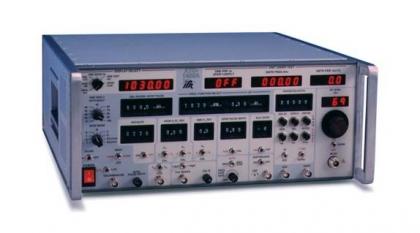Overall plan
The test system is divided into two parts: hardware platform and software platform. The function of the system hardware platform is to provide the necessary physical resources for system testing. When building the hardware platform, consider the working principle and structural characteristics of the integrated avionics system, and combine all LRU test requirements and interface types to determine the required test resources. The system hardware platform is centered on a high-performance industrial computer to realize the control of various test instruments and equipment. The function of the system software platform is to provide a development, debugging and running environment for the test. The software development of the test system is under the WindowsXP operating system, with NILabview2011 as the integrated development environment.
Test system realization function: It can perform function and performance testing of the entire avionics system and each functional subsystem LRU, automatically determine the test results, fault diagnosis, and locate the fault to the replaceable unit in the field (ShopReplaceableUnit, SRU).
The working principle of the test system: The test system realizes the matching connection between the hardware resources of the test platform and the tested LRU through the adaptation system, and calls related test instruments through the test program to provide incentives for the tested LRU. The system evaluates the output response of the LRU, and completes the performance test and fault diagnosis of the tested LRU. For test data, store, query and print according to user needs. In terms of testing methods, either the fully automatic method or the manual method of selecting a certain test item can be selected, and the operation has clear flexibility.
System structure
Hardware platform
The hardware platform consists of a system controller and a test platform. The system controller includes a measurement and control computer and peripherals. The measurement and control computer adopts Advantech MIC-31210 industrial computer with built-in IEEE1394 interface card and GPIB interface card. The system controller completes the development, debugging and operation of the test program.

The test platform includes the physical resources required for system testing, including GPIB bus instruments and VXI bus instruments. The GPIB bus and VXI bus control modes are adopted respectively, so that the system has an open structure and is convenient for system resources. upgrade.
Software platform
Development environment: The Labview integrated development environment is used to establish a complex virtual interface, which can complete the simulation and display of thousands of flight parameters transmitted by the entire avionics system.
Database: This system uses Access database to store the part number/serial number, test performance parameters, test conclusions and related diagnostic information of the LRU of the integrated avionics system to be tested.
Device driver module: including GPIB/VXI instrument driver, control board driver, etc. The driver is at the bottom of the software system and can be called by function modules in real time.
The human-computer interaction module is used to complete the information interaction between the operator and the test platform, and complete the test according to the interactive steps. The function is modularized and divided into the following 5 sub-modules:
Platform self-check module: complete the detection of all hardware resources (adaptation system, switch matrix, equipment) of the maintenance test platform, and check the test platform To judge the working status of the avionics;
Mode selection module: to achieve the selection of the test mode, it can realize the individual test of each LRU, and also realize the comprehensive test of the entire avionics system;
Performance Test module: The system provides analog and digital signal excitation through the control signal generator and digital signal board, and reads, analyzes and judges the output information of the system, and finally gives the test results and errors;
Fault diagnosis module: This module is realized on the basis of test data analysis and evaluation. Deal with data abnormalities, locate faults, and finally provide users with maintenance guidance strategies;
Data management module: Store, query, modify, and print test results. The test steps, test data and test conclusions are generated in the form of reports.
